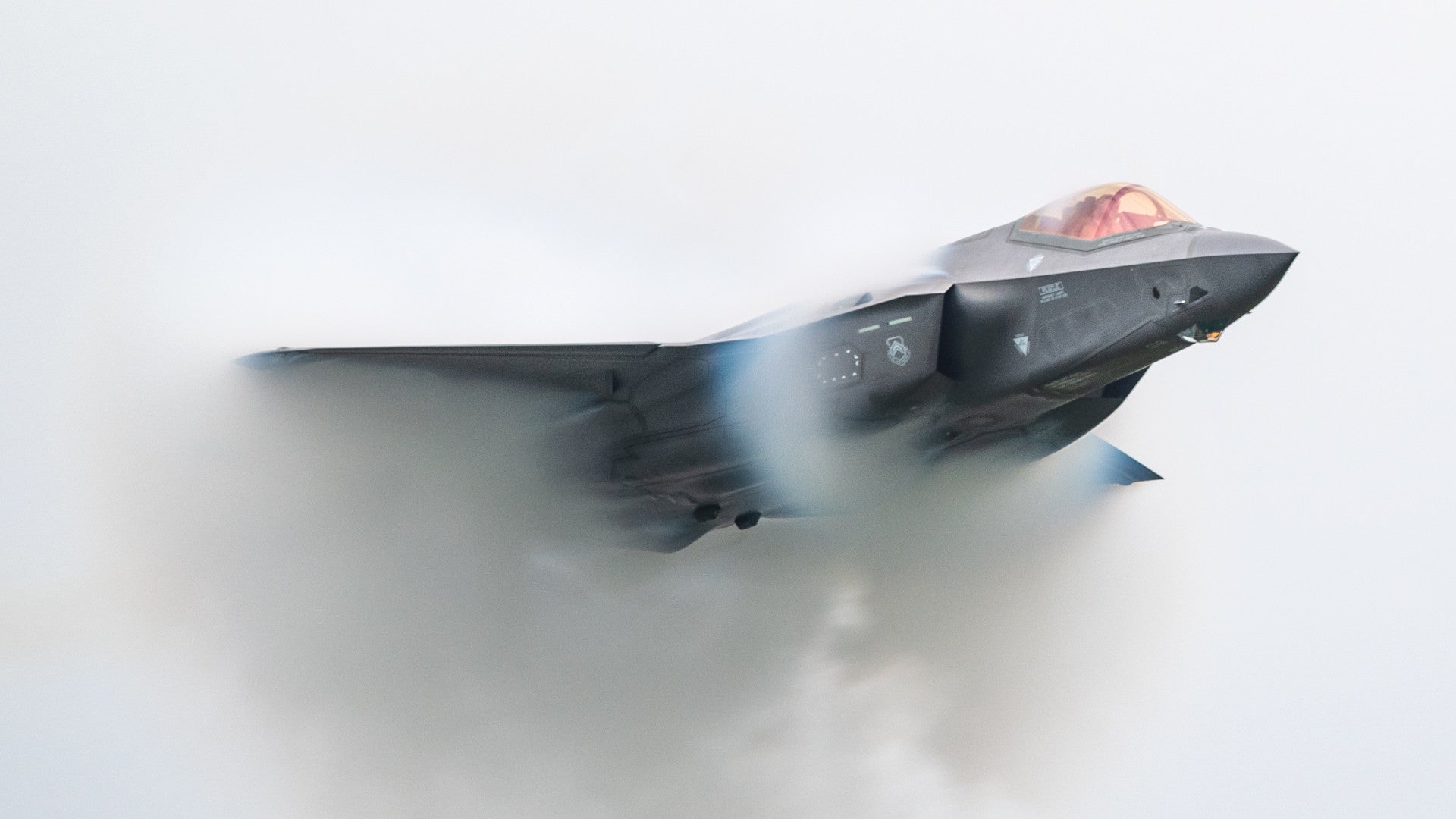The U.S. Air Force’s top acquisition official has given new details about an ultra-ambitious plan to push defense contractors to design and build new fighter jet designs at a rate of once every five years. It’s a concept that is completely reversed from how the U.S. military has handled its latest fighter jet program, the F-35 Joint Strike Fighter, and one that faces its own significant challenges in producing viable results.
Defense News‘ Valerie Insinna was first to report on what Will Roper, the Assistant Secretary of the Air Force for Acquisition, Technology, and Logistics, is now calling the “Digital Century Series,” on Sept. 16, 2019. The concept is set to become a central component of the Next Generation Air Dominance (NGAD) program, which is seeking to develop a host of new air superiority aircraft, and capabilities to go with them, that could begin to supplement existing advanced fighter jets, such as stealthy F-35s and the F-22 Raptors, as early as 2030. The War Zone recently published an in-depth analysis of the evolution and current state of the NGAD effort, which you can find here.
“Based on what industry thinks they can do and what my team will tell me, we will need to set a cadence of how fast we think we build a new airplane from scratch,” Roper told Defense News. “Right now, my estimate is five years.”
“I may be wrong,” he continued. “I’m hoping we can get faster than that – I think that will be insufficient in the long term [to meet future threats] – but five years is so much better than where we are now with normal acquisition.”
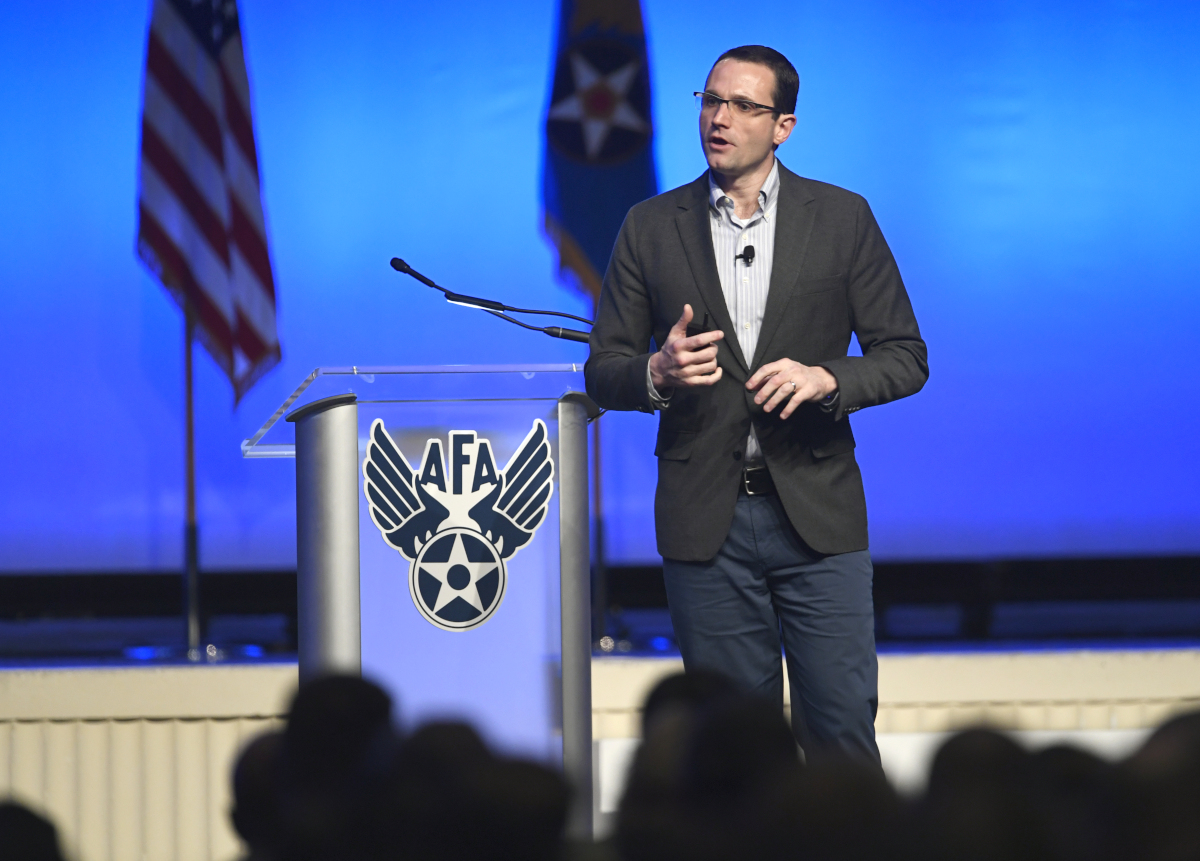
Roper has called his plan the Digital Century Series in reference to the U.S. Air Force’s “Century Series” fighter jets that it paid to develop in the 1950s, starting with the North American F-100 Super Sabre. Roper’s main goal is to get away from ponderous and costly acquisition cycles with lengthy development periods before production of aircraft can even begin.
He also views the concept as a way to keep potential major opponents constantly off balance and guessing as to what kind of combat aircraft the United States might deploy next. As a hypothetical, he described the following scenario to Defense News:
“Every four or five years there was the F-200, F-201, F-202 and it was vague and mysterious [on what the planes] have, but it’s clear it’s a real program and there are real airplanes flying. Well, now you have to figure out: What are we bringing to the fight? What improved? How certain are you that you’ve got the best airplane to win?
…
“How do you deal with a threat if you don’t know what the future technology is? Be the threat – always have a new airplane coming out.”
Roper identified three key underlying principles that he feels will enable the Digital Century Series concept. These are “agile software development,” “open architecture systems,” and “digital engineering,” according to Defense News.
The first term refers to a process common in the software industry where programmers rapidly generate computer code to support various functions on an aircraft or within its individual systems, test it out, and release it. Programmers then immediately solicit feedback and begin incorporating improvements in subsequent software builds.
Open architecture simply refers to a system that is designed to be modular, both in terms of hardware and software, allowing for the rapid integration of new and improved capabilities in the future. This could include the replacement of entire systems, such as radars and other sensors, or the additional added functionality to existing components.
Digital engineering is perhaps the most important part of Roper’s vision, involving dramatically increasing the use of digital modeling and rapid prototyping to speed up the development of aircraft and reduce the amount of initial testing of those designs before production can begin. Lockheed Martin’s Skunk Works has been a particular pioneer in these kinds of processes. Northrop Grumman and Boeing, America’s other two major producers of combat aircraft, have also been working to make more use of high fidelity digital modeling in the development, as well as in the production of planes. This includes modeling for stealthy aircraft, such as the F-35 and B-2, which have designs that require extreme precision to ensure they maintain their radar-evading features.

Roper then explained to Defense News how he envisioned the acquisition cycle for a Digital Century Series aircraft to go. He said that some number of companies would get contracts to develop a new fighter jet. Each firm would have to produce a high fidelity digital model of their design and then similarly simulate the production and repair processes, with an eye toward simplifying processes whenever possible and thereby reducing costs and maintenance requirements. The Air Force would then down-select to one design. This entire process would take five years.
The winning company would then get a contract to build 24 planes per year for at least three years. This would lead to a fleet of 72 aircraft, the minimum that Air Combat Command says it needs to sustain actual combat operations, according to Roper. As this firm is getting production underway, the Air Force would begin the process all over again.
Altogether, its radical concept, even if it’s one that Roper has described in more general terms since April. It’s also one that has a number of inherent challenges that it’s unclear if the Digital Century Series will be able to surmount.
For one, Roper’s view of the original Century Series as a period where the Air Force deliberately hired various companies to rapidly build small fleets of new aircraft isn’t entirely in line with the actual history. For example, the first of the designs, the F-100, leveraged considerable design experience from the earlier F-86 Sabre, which first flew in 1947, in order to go from a mock-up in 1951 to a flying prototype in 1953.
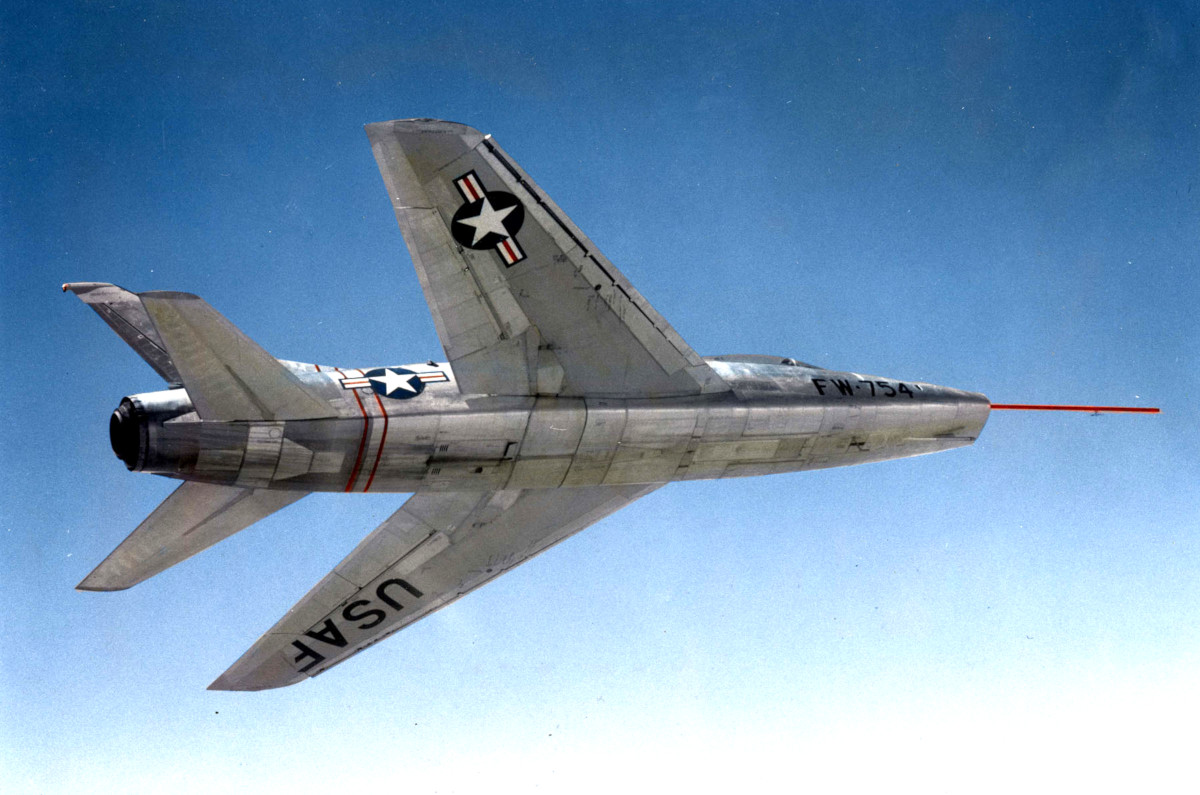
The next aircraft in the series, the McDonnell’s F-101 Voodoo was a redesign of an aircraft, the XF-88, that the company had first received a contract to build in 1947. The first Voodoo entered service in 1957.
Some of the Century Series aircraft did progress in development at faster paces, but it was hardly a given, and the total production numbers in most cases were hardly small. The only design that entered service, but didn’t have a production run of more than 500 aircraft was the F-106 Delta Dart. Not counting the F-110 Spectre, an iconic aircraft that was subsequently redesignated as the F-4 Phantom II, the F-106s actually stayed in Air Force service the longest. Air National Guard units retired the last of the Delta Darts in 1988, nearly 30 years after their introduction. The F-104 Starfighter had the shortest American service life, heading into retirement after 17 years, though it remained in foreign service for decades afterward.
Four of the first 10 aircraft designs – the F-103, F-107, F-108, and F-109 – also never saw series production at all. Roper’s model seems to largely assume that the truncated and heavily digitized acquisition process will either somehow be able to avoid selecting designs that do not perform as expected or that these failures won’t be detrimental in any way to the overall concept. This would also require stable budgets to ensure that there are no schedule slips that could also have cascading impacts on the overall concept.
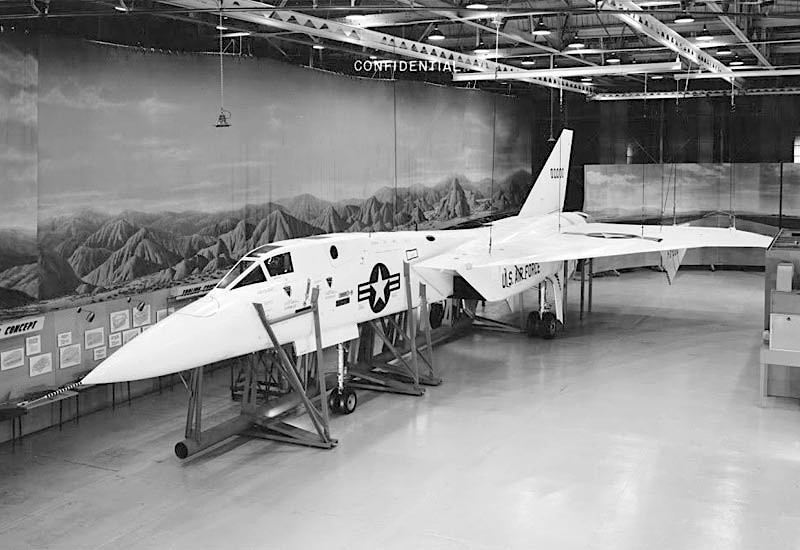
It’s also worth noting that in the 1950s, there were a wide range of companies capable of producing contemporary combat jet designs. Bell, Convair, Lockheed, McDonnell, North America, and Republic, all designed aircraft in the Century Series. Other companies, including Douglas, Grumman, and Fairchild, and Vought, all built fighters for the U.S. Navy during the same period or proposed aircraft to the Air Force, but did not receive contracts. Today, there are just three major companies in the United States that produce military jet aircraft of any kind and one of them, Northrop Grumman, hasn’t produced a manned fighter jet of its own in decades.
Roper noted that smaller companies could team with one of the big three to help bring new technologies and design concepts to the table. At the same time, it’s hard to see his vision of a heavy focus on rapid, digital prototyping and leveraging of existing knowledgebases as doing anything but fostering a preference for iterative and evolutionary rather than revolutionary designs – just as was the case with the original Century Series in reality. The F-106 was a direct outgrowth of the F-102, originally being designated the F-102B, and the design for the failed North American YF-107 Ultra Sabre used the F-100 as a starting place.
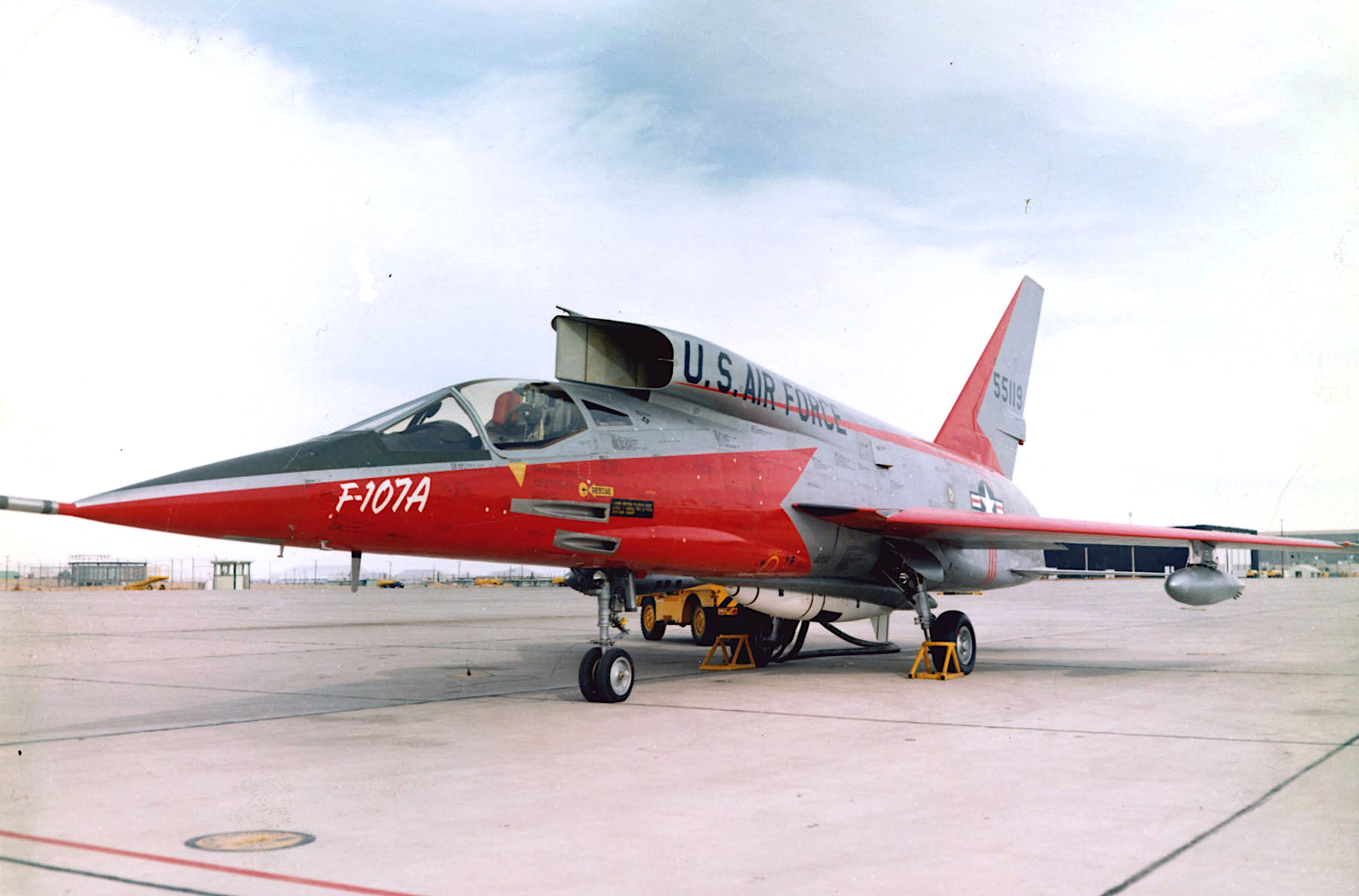
Small fleets of advanced aircraft have typically proven to be difficult and very costly to operate and maintain. It’s hard to see how the Air Force will be able to fly less than 100 examples of multiple distinct aircraft designs simultaneously, even for relatively short periods of time, without having to establish complex logistics chains to support them, especially during sustained operations.
Beyond all this, it seems almost worthless to compare what it takes to develop next-generation stealthy aircraft to what is required to devise even advanced fourth-generation fighter jet designs. The existing experience globally with fifth-generation aircraft has typically been protracted and expensive development cycles, regardless of the capabilities of the final product.
Again, the requirement for a five-year schedule to go from a digital design to a production-ready stealthy aircraft would seem to favor iterative designs to even have any real chance of meeting that goal. This, in turn, calls into question whether or not any potential opponent would truly be kept guessing between the development of one aircraft and the next.
The Air Force released the video below, which offers a vision of what aerial warfare might look like in 2030, including new manned fighter jets and “loyal wingman” drones, in 2018.

“It’s a concept that implies turning the aerospace industry upside down,” Stephen Trimble, Aviation Week’s Defense Editor and good friend of The War Zone, told us for our recent NGAD feature even before the exact details of the Digital Century Series had emerged. “The Air Force wants contractors to put their focus mainly on cutting-edge design, then leave the production and sustainment phase open to competition. It’s the only way the Air Force can pump out new aircraft types every three years, rather than one every 15-20 years. And that approach also incentivizes industry to allow the Air Force to retire aircraft as soon as they become obsolete, rather than keep them propped up for decades with expensive incremental upgrades.”
Even then, the goals seem particularly lofty. Roper’s concept has also emerged as the Air Force appears to increasingly be moving away from traditional fighter jets, as well as manned ones, in general. With this in mind, together with the other issues noted above, it would seem very likely, if not probable, that the Digital Century Series would at least include some unmanned combat air vehicles (UCAV), if it doesn’t consist of them entirely.
Roper himself is also a major advocate for Skyborg, an Air Force effort focused on developing “open architecture” software and other components necessary to rapidly turn drones, or even potentially manned aircraft, into autonomous UCAVs. The Digital Century Series could easily lead to other distributed capabilities across the various fleets of aircraft, all of which might be networked together, but with particular designs optimized for specific roles, such as sensor platforms or weapon trucks.
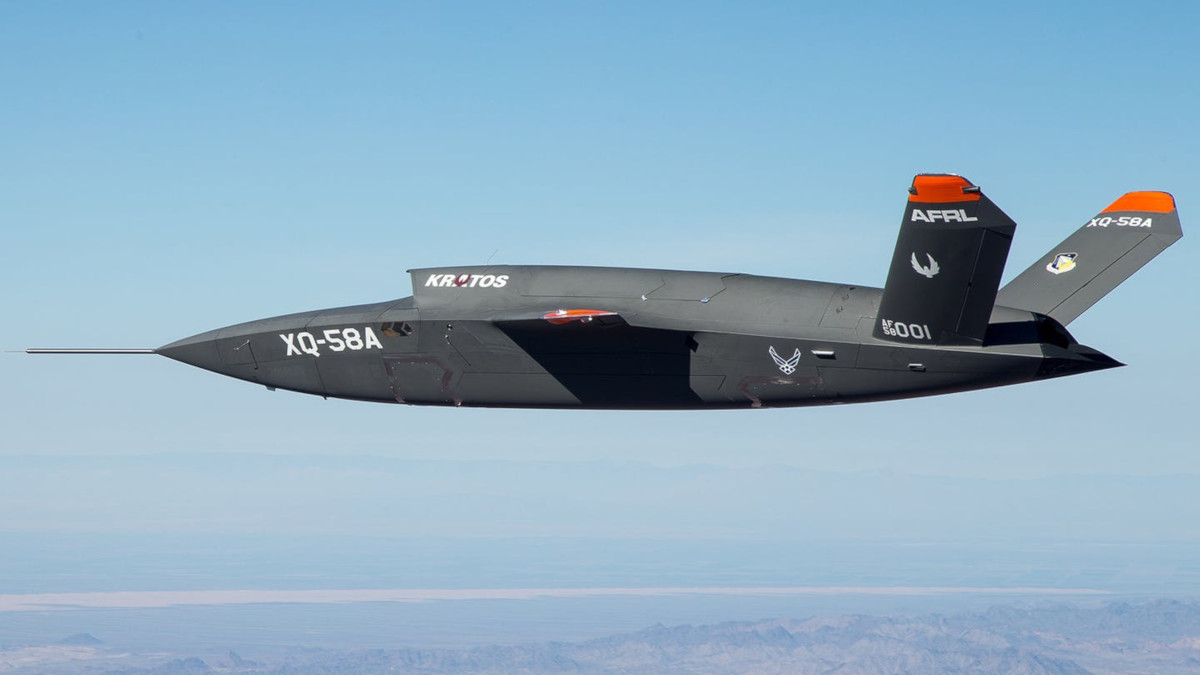
Unmanned aircraft, even advanced UCAVs, are inherently more disposable than manned aircraft, have no need for complex life support and safety systems, and offer designers the freedom to craft an aircraft without any other requirements that a human pilot imposes. That last factor also means that necessary flying time, such as the need for constant proficiency training, is reduced if not largely eliminated, which, in turn, lowers operating and maintenance costs massively. You can read more in great detail about the benefits that advanced unmanned designs might offer, broadly, in this past War Zone feature. In fact, that piece largely described what Roper is proposing, but strictly for unmanned aircraft.
All told, Roper may be talking about a Digital Century Series of fighter jets in a way meant to hearken back to the original Century Series of manned fighters, but any actual results may be a much more diverse mix of “aircraft” designs, many of which may never have a pilot on board.
Contact the author: joe@thedrive.com
